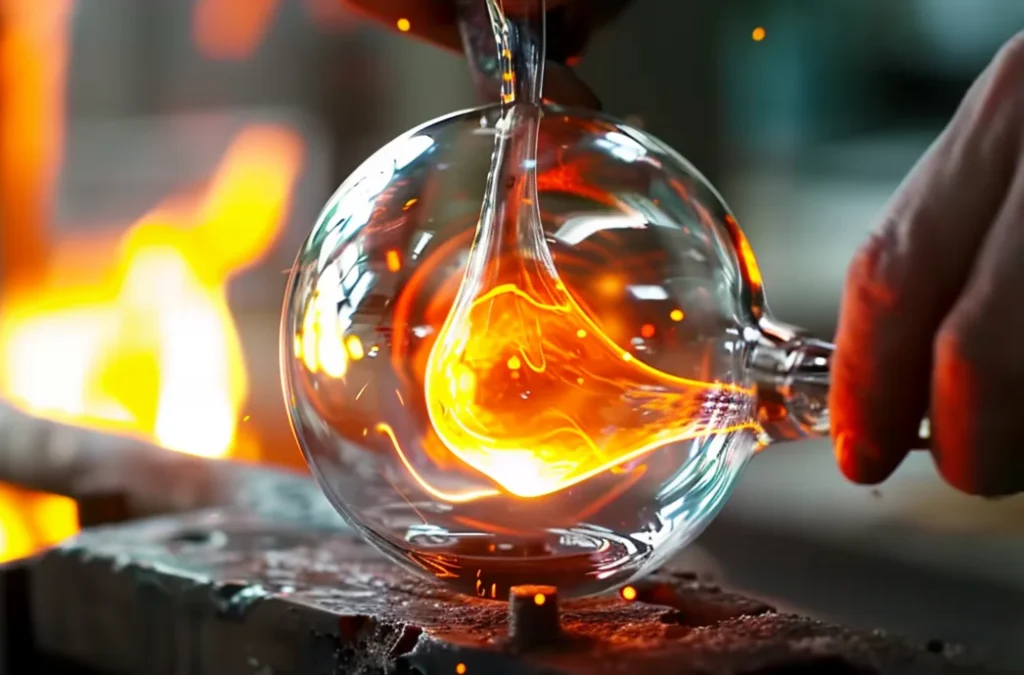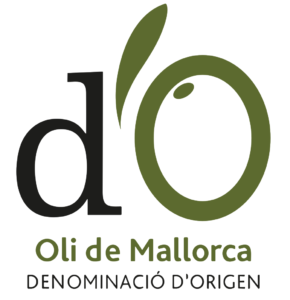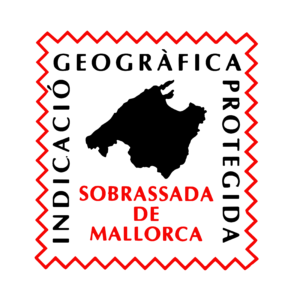“When the Venetian Masters Visited Mallorca” tells the story of how these Italian artisans came to the island and revolutionized glassmaking. They brought with them advanced techniques and innovative styles that completely transformed local production. This article explores how their influence improved the quality and design of Mallorcan glass and left an indelible mark on the culture and economy of the region.

First, we will situate the historical context prior to the arrival of the Venetians and how they found in Mallorca an ideal place to share their knowledge. We will see how Venetian techniques and styles were assimilated by local artisans, creating a cultural fusion that endures to this day.
We will visit the iconic Gordiola factory, founded in 1719, which symbolizes this mix of traditions and the preservation of Venetian techniques. Through testimonies and anecdotes from Mallorcan artisans, we will discover the personal stories that have shaped this artisanal evolution.
Finally, we will explore the current situation of the glassblowing industry in Mallorca, the challenges it faces and the opportunities that lie ahead. This article is not only a historical journey, but also a celebration of a living tradition that continues to attract locals and visitors alike.
The glassmaking tradition in Venice
To understand how Venetian master glassmakers influenced Mallorca, we must first know a little about the history of glass in Venice. Venice, especially the island of Murano, is famous for its long tradition of glassmaking, dating back to the 8th century. Venetian artisans were true masters, known for their ability to create exquisitely detailed and high quality glass pieces. They developed unique techniques, such as blown glass and enameled glass, which were kept secret for centuries to protect their lucrative industry.
Situation in Mallorca before the arrival of the Venetians
Before the Venetians arrived in Mallorca, the glass industry on the island was quite rudimentary. Although there were some local workshops producing glass, the quality and variety of the products were limited. The technique of glass blowing was not widely practiced, and most glass pieces were functional, without much ornamentation.
The need for innovation
Mallorca, with its strategic location on the Mediterranean, has always been a melting pot of cultures and techniques. During the 17th and 18th centuries, the island experienced an economic and cultural boom, driven by trade and interaction with other Mediterranean cultures. The demand for luxury and decorative products increased, creating a need to innovate and improve local craft techniques. This is where the Venetian masters came into play.
The arrival of the Venetian masters
In the late 17th and early 18th centuries, several Venetian master glassmakers arrived in Mallorca. Some came at the invitation of local nobles and merchants who wanted to improve glass production on the island, while others came in search of new opportunities and markets. These craftsmen brought with them not only their skills, but also their tools and manufacturing secrets, which marked the beginning of a new era for the glass industry in Mallorca.
First contacts and settlements
Venetian masters began to establish workshops in different parts of the island, sharing their knowledge with local craftsmen. This cultural and technical exchange not only improved the quality of glass produced in Mallorca, but also introduced new styles and designs, which quickly gained popularity among the local population and visitors.
Are you a gastronomy professional or a lover of high quality products looking to connect with the best salt producers in Mallorca?
Discover and contact here the artisans behind the world famous Flor de Sal de Mallorca and take your culinary experience to the next level with the purity and unique flavor of this exceptional salt.
Newsletter
Let us inspire you with the most authentic Mediterranean! Sign up for our newsletter and immerse yourself every month in the rich traditions and exquisite products of Mallorca!
The world's leading sites for blown glass craftsmanship
Glass blowing is a craft technique that is practiced in different parts of the world. Some of the most recognized places for their tradition in glass blowing are:
- Spain: Mallorca and La Granja (Segovia) are historical centers of blown glass production.
- Italy: The island of Murano in Venice is famous for its master glassmakers and their elaborate glass pieces.
- Czech Republic: The Bohemian region has a long tradition in glassmaking, especially in the city of Karlovy Vary.
- Mexico: The blown glass is a popular craft in cities like Tonala and Guadalajara.
- United States: There are glassblowing workshops in different states, such as Washington, California and New York.
- Japan: The island of Okinawa is known for its blown glass with vibrant colors and unique designs.
The Arrival of the Venetian Masters
The story of how Venetian master glassmakers came to Mallorca is full of intrigue and opportunity. During the 17th and 18th centuries, the Mediterranean trade routes were bustling, and Venice was a center of commerce and art. Strategically located on these routes, Mallorca became an attractive destination for Venetian masters seeking to expand their influence and find new markets.
The first contacts between the Venetians and the Mallorcans probably occurred through merchants and nobles traveling between the two places. These contacts led to formal invitations for Venetian masters to bring their skills and knowledge to the island. The local nobles and merchants saw in the Venetians an opportunity to improve the quality and prestige of glass production in Mallorca.
The first Venetian masters in Mallorca
The Venetian masters who arrived in Mallorca were not simple craftsmen; they were true artists with years of experience and refined techniques. They brought with them specialized tools and manufacturing secrets that had been kept in Venice for centuries. These early masters began to work in collaboration with local craftsmen, establishing workshops and sharing their knowledge.
The arrival of these masters involved not only an exchange of techniques, but also a cultural and artistic exchange. The Venetians introduced new styles and designs that quickly gained popularity. Among the first Venetian masters to settle in Mallorca are names that have been lost in history, but whose influence is felt in every piece of blown glass produced on the island.
Establishment of workshops and factories
As the Venetian masters settled in Mallorca, they began to establish workshops and factories in different parts of the island. These workshops not only produced high quality glass, but also became centers of apprenticeship and training for local craftsmen. The Gordiola factory, founded in 1719, is an iconic example of this Venetian influence. This factory has not only survived the passage of time, but has also kept alive the tradition of glass blowing in Mallorca.
Venetian workshops and factories in Mallorca adopted and adapted traditional Venetian techniques, such as blown glass and enameled glass. Local artisans learned to create ornamental pieces, such as vases, lamps and decorative figures, which were not previously produced on the island. This new variety of products raised the status of glass production in Mallorca and attracted customers from all over Europe.
Impact on local production
The arrival of the Venetian masters had an immediate and lasting impact on glass production in Mallorca. Advanced techniques and new designs completely transformed the quality and variety of glass products. Local artisans not only adopted these new techniques, but also adapted them to their own traditions and styles, creating a unique fusion that can still be appreciated today.
Mallorcan blown glass became a symbol of quality and beauty, recognized both locally and internationally. The Venetian influence not only improved glass production, but also inspired generations of Mallorcan craftsmen to continue innovating and perfecting their art.
Mallorcan blown glass became a symbol of quality and beauty, recognized both locally and internationally. The Venetian influence not only improved glass production, but also inspired generations of Mallorcan craftsmen to continue innovating and perfecting their art.
The Transformation of Glass Crafts in Mallorca
Techniques introduced by the Venetians
The arrival of the Venetian master glassmakers in Mallorca brought with it a radical change in glass-making techniques. These are some of the specific techniques and styles they introduced:
- Blown glass: Although blown glass existed in other parts of Europe, the Venetians were true masters of this technique. They brought with them the art of creating complex and delicate forms using a blowing cane. This technique enabled Mallorcan craftsmen to produce finer and more detailed pieces, such as vases, goblets and decorative figures.
- Enamelled glass: The Venetians were known for their ability to decorate glass with vibrantly coloured enamels. This technique, which involved applying coloured glass powder to the surface of a piece before it was annealed, allowed Mallorcan craftsmen to add ornate detail and intricate patterns to their creations.
- Millefiori: An iconic Venetian technique, millefiori means ‘thousand flowers’ and refers to the creation of floral patterns by fusing multiple rods of coloured glass together. This technique was introduced in Mallorca and quickly became a favourite for its beauty and complexity.
- Latticino: This technique involves the inclusion of white or coloured glass threads in the blown glass piece, creating a lace or lattice effect. The Venetians taught the Mallorcans how to master this technique to produce unique and visually stunning pieces.
Innovations and improvements
The Venetian influence not only brought new techniques, but also raised the quality and design of glass produced in Mallorca. Some of the notable innovations and improvements include:
- Glass quality: The Venetians introduced formulas to improve the clarity and purity of the glass, resulting in pieces that were more transparent and less prone to defects. This raised the quality standard of glass production in Mallorca.
- Ornamental designs: With the introduction of techniques such as enamelled and millefiori glass, Mallorcan craftsmen began to produce much more decorative and elaborate pieces. The new designs included floral, geometric motifs and mythological figures, which were previously unseen in local production.
- Variety of products: Thanks to Venetian techniques, the variety of glass products in Mallorca expanded significantly. In addition to functional objects, workshops began to produce luxury items such as candelabra, ornamental mirrors and glass jewellery.
- Precision and detail: Venetian techniques required a high level of precision and attention to detail. Local craftsmen, by learning these new skills, were able to create pieces with finer details and more sophisticated finishes.
Evolution of local workshops
The integration of Venetian techniques had a profound impact on the evolution of glass workshops in Mallorca:
- Adoption of new techniques: Mallorcan craftsmen not only adopted the techniques brought by the Venetians, but also began to experiment and combine these techniques with their own traditions. This process of assimilation and adaptation resulted in a unique fusion of styles.
- Training and transmission of knowledge: Local workshops became centres of learning where Venetian knowledge was passed on to new generations of craftsmen. This constant flow of information and skills ensured that advanced techniques were kept alive and evolved over time.
- Expansion of production: With the improvement in quality and variety of products, local workshops were able to expand their production and reach new markets. Mallorcan glassware began to be appreciated not only on the island, but also in other parts of Europe.
- Continuous innovation: The Venetian influence inspired Mallorcan craftsmen to keep innovating and looking for new ways to improve their techniques and designs. This attitude of constant improvement and experimentation became a distinctive feature of glass craftsmanship in Mallorca.
Lasting Impact of the Venetian Masters
Cultural legacy
The arrival of the Venetian masters in Mallorca left a cultural legacy that has endured over the centuries. The techniques and styles introduced by these Italian craftsmen not only transformed the glass industry on the island, but also became deeply integrated into Mallorca’s cultural identity. Today, Venetian techniques remain an essential part of the island’s glass craftsmanship, reflecting a rich heritage that combines innovation and tradition.
One of the most outstanding aspects of this legacy is the transmission of knowledge from generation to generation. Mallorcan craftsmen not only adopted Venetian techniques, but also adapted and perfected them over time. This continuity has ensured that the skills and secrets of glassblowing are kept alive, contributing to a unique cultural identity that distinguishes Mallorca.
The Venetian influence is also evident in the aesthetics and design of Mallorcan glass. The ornamental patterns, vibrant colours and elegant shapes introduced by the Venetians have become a distinctive feature of Mallorcan blown glass. This aesthetic heritage continues to be appreciated both locally and internationally, and is a testament to the enduring cultural influence of the Venetian masters.
Current examples
Today, several craftsmen and factories in Mallorca continue to use the traditional techniques introduced by the Venetian masters. These companies not only keep the tradition of glassblowing alive, but also innovate and experiment, creating contemporary pieces that honour their rich artisan heritage.
- Gordiola Glass Factory: As mentioned above, Gordiola is an outstanding example of the continuation of Venetian techniques in Mallorca. Founded in 1719, this factory continues to produce blown glass using traditional methods. Visitors to Gordiola can watch the artisans in action and buy unique pieces that combine Venetian tradition with Mallorcan style.
- Lafiore Art Glass: Known for its contemporary and creative approach, Lafiore Art Glass uses traditional glass blowing techniques to create modern pieces. The company combines skilled craftsmanship with innovative design, producing decorative and functional items that are both beautiful and practical. Lafiore Art Glass is a clear example of how Venetian techniques can be adapted to modern trends without losing their essence.
- Menestralia: This factory, located in the north of Mallorca, is also dedicated to the production of blown glass using traditional methods. Menestralia offers a wide range of products, from vases and goblets to lamps and sculptures, all made with the precision and detail characteristic of the Venetian technique.
These examples show that the influence of the Venetian masters is still strong in Mallorca. The continuity of these techniques and styles not only preserves an important part of the island’s cultural heritage, but also ensures that the tradition of glassblowing continues to evolve and adapt to modern times.
Other articles that might interest you

Sal marina de Mallorca, una de las 8 mejores sales del mundo
La Flor de Sal de Mallorca es una sal pura y artesanal conocida por su textura ligera y escamosa y

Havssalt från Mallorca, ett av de 8 bästa salterna i världen
Flor de Sal de Mallorca är ett rent och hantverksmässigt salt som är känt för sin lätta och flingiga konsistens
Last published articles
Havssalt från Mallorca, ett av de 8 bästa salterna i världen
Flor de Sal de Mallorca är ett rent och hantverksmässigt salt som är känt för sin lätta och flingiga konsistens
Sal marina de Mallorca, una de las 8 mejores sales del mundo
La Flor de Sal de Mallorca es una sal pura y artesanal conocida por su textura ligera y escamosa y









